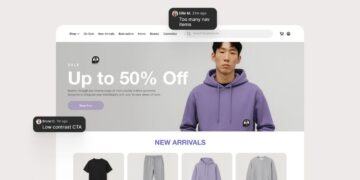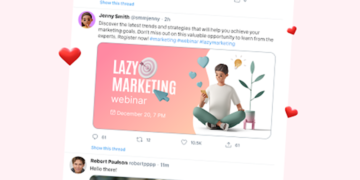Accessibility in web design is becoming an increasingly important topic and affects every organisation with a digital presence. But what is it? Why is it important? And how can you make sure your website is accessible?
What is Web Accessibility?
Web accessibility is a set of standards every website must adhere to that ensures equal access and opportunity for people with disabilities. A key principle of accessibility is creating flexible websites to cater for different user needs, preferences and situations. This is something we do day-to-day for our clients, so we know accessibility like the back of our hand – and we make it look polished.
In 2020, the EU announced what is known as the Web Accessibility Directive, a regulation stating that public bodies must make their website and mobile apps accessible to all people, including persons with disabilities. Since the regulation, Ireland’s own National Disability Authority (NDA) and the Centre for Excellence in Universal Design (CEUD), a specialised body within NDA, have been pushing this directive forward by holding public sector bodies accountable.
How Kooba Reacted to this Digital Movement?
Since the directive, Kooba has taken the opportunity to learn and implement accessibility into our web practices – we want to be at the forefront of this digital movement. Not only are we in the process of redesigning the NDA and CEUD websites (with the accessibility practices they are enforcing), but those of other public entities as well. To name a few: the National Standards Authority of Ireland suite, the National Treasury Management Agency, and Bord Bia Irish Food Board have entrusted us to make their sites consistent with web content accessibility standards. And we’re always looking for new digital accessibility challenges to take on.
Creating content with integrity and equality in mind is a part of our culture. Throughout the design and development process, we keep accessibility problem solving at the forefront of our intentions.
So with the minefield of non-conforming variables, how can you get it right?
There are guidelines and best practices that we guide our clients through to ensure their website is moving in the right direction. The first step is a full site audit which hones in on aspects like;
- HTML semantics, including correct use of heading tags
- Images with text descriptions (this also helps with SEO)
- Accessible menus, forms and tables
- Screen reader compatibility
- Effective and sensible use of colour
- ARIA for web applications
- Compatibility with assistive technology
- Support for alternative keyboards (such as braille and multilingual).
After we identify problem areas we can then optimise the site not only to conform to the guidelines but also to help those that need it most. Web design is often seen as a business need for revenue and lead generation, but it’s arguably more important for us to be stewards of communication offering a well-manicured helping hand.
We take pride in helping to connect people from all walks of life;
We design websites to benefit users with disabilities by supporting alternative input methods and a friendly navigation; We can test your website and redesign it to perform well on a screen reader – to make sure that visually impaired users won’t have trouble differentiating between design elements or similar colours; For an audience with hearing, cognitive or neurological disabilities, we add text descriptions, subtitles, sign language or images to communicate instead, skipping any complex design features or tricky navigation.
Reaching accessibility conformance entails following a specific set of criteria, however, there are many pitfalls and common mistakes when it comes to website conformance. Luckily, we’re experts in this area and we’ve successfully audited and redesigned many websites for this sole purpose (*buffs nails against shirt*) and take pride in bringing our client’s messages to wider audiences.
Wrapping Up
Take the first step towards accessibility. Get in touch with our team to arrange an evaluation and ensure accessibility early on in the creation process.
Read the full article here














